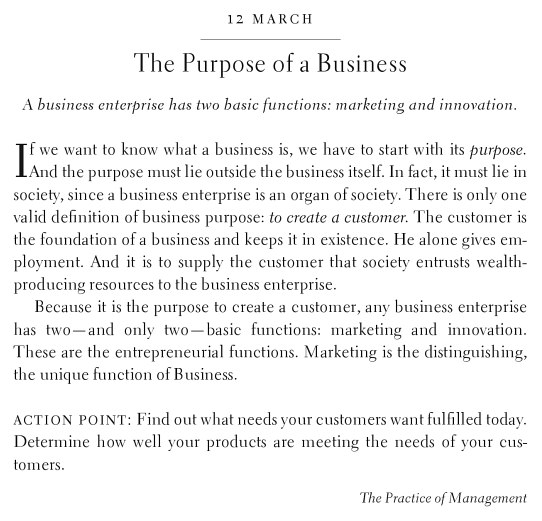 So said the ‘Father of Management Theory’, Peter Drucker.
So said the ‘Father of Management Theory’, Peter Drucker.
The Escher Cycle agrees.
Chapter 2 opens with the words, “Different people want different things, and the foundation stone of any business is the set of customer needs that it aims to satisfy. If it serves a lot of people with strong needs then there is potential to build a large and thriving business. The fewer or weaker the needs, or the more short-lived they are, the smaller, weaker and more short-lived will be any business that tries to fulfil them.”
Drucker says that the only two basic functions of any business enterprise are marketing and innovation.
The Escher Cycle agrees that these are two themes that run through the core of the book:
— Chapter 2, Satisfying Customer Needs deals with marketing, and the innovation required to keep up with changing customer needs over time.
— Chapter 3, Using Resources, deals with how to deliver the services that the marketing has defined or identified, and the innovation of that delivery over time.
— Chapter 4, Making Money, deals with ensuring that the marketing and innovation result in profit.
— Chapter 5, ‘Today’, deals with how to balance the above marketing and innovation activities, in order to optimise the outcome for the business.
— Chapter 6, ‘And in the Future’, deals with innovation of new products and services and strategic diversification.
— Chapter 7, ‘Origins of Strategy’, deals with positioning of the business in its market, and innovation to shift or expand that position.
— Chapter 8, ‘The Escher Cycle’, deals with the cycles of innovation that exist within any industry or economy, and how the business can leverage them to enhance its own innovation and marketing.
Peter Drucker said there were only two basic functions in any enterprise.
The Escher Cycle shows how to break out the detailed different elements of those basic functions and build them into a self-reinforcing, adaptive system.